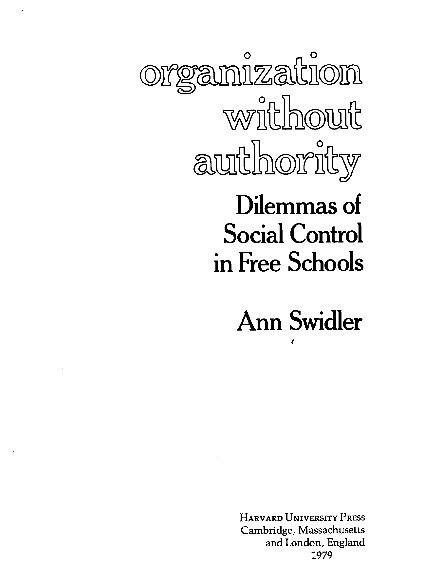Gideon Kunda: Engineering Culture: Control and Commitment in a High-Tech Corporation (2006)
Filed under book | Tags: · corporate culture, ethnography, labour, management, organization, post-bureaucracy, software industry, technology

Engineering Culture is an award-winning ethnography of the engineering division of a large American high-tech corporation. Now, this influential book—which has been translated into Japanese, Italian, and Hebrew—has been revised to bring it up to date. In Engineering Culture, Gideon Kunda offers a critical analysis of an American company’s well-known and widely emulated “corporate culture.” Kunda uses detailed descriptions of everyday interactions and rituals in which the culture is brought to life, excerpts from in-depth interviews and a wide variety of corporate texts to vividly portray managerial attempts to design and impose the culture and the ways in which it is experienced by members of the organization.
The company’s management, Kunda reveals, uses a variety of methods to promulgate what it claims is a non-authoritarian, informal, and flexible work environment that enhances and rewards individual commitment, initiative, and creativity while promoting personal growth. The author demonstrates, however, that these pervasive efforts mask an elaborate and subtle form of normative control in which the members’ minds and hearts become the target of corporate influence. Kunda carefully dissects the impact this form of control has on employees’ work behavior and on their sense of self.
In the conclusion written especially for this edition, Kunda reviews the company’s fortunes in the years that followed publication of the first edition, reevaluates the arguments in the book, and explores the relevance of corporate culture and its management today.
Publisher Temple University Press, 2006
Labor And Social Change series
ISBN 1592135471, 9781592135479
320 pages
Ann Swidler: Organization without Authority: Dilemmas of Social Control in Free Schools (1979)
Filed under book | Tags: · 1960s, 1970s, counterculture, education, organization

“This is a study of alternative organizations–the free schools, communes, and collectives that grew out of the radical and political movements of the 1960s. The drama of that decade, reverberating into the 1970s and beyond, was significant for American culture and American organizational life. Yet we are still puzzled by the changes the sixties brought. This book speaks to that puzzlement, offering a systematic analysis of the characteristic organizations produced by the sixties–organizations that rejected hierarchy and authority in the attempt to devise more liberating forms of human cooperation.” (from the Preface)
Publisher Harvard University Press, 1979
ISBN 0674643402, 9780674643406
199 pages
PDF (no OCR)
Comment (0)Eastside Projects User’s Manual Draft Five (2012)
Filed under manual | Tags: · art, institutional critique, organization, self-organization

Organisations do not often provide user’s manuals. This is the fifth draft user’s manual for Eastside Projects. It explains what the organisation is made of, how it was set up, who it is for, how it can be used and what it can offer. As would be the case when operating a machine or learning a subject, a manual may be necessary for the full use of of Eastside Projects. In this draft, the manual is structured as an alphabetical compendium of verbs. Each of these interconnected entries describes an activity engaged in by Eastside Projects as an organisation or a process occurring in the Eastside Projects building. Beneath each entry is a prompt to the reader to follow one of multiple narrative paths through the text. Readers unfamiliar with Eastside Projects should begin at Describing. Others suggested starting points Welcoming, Exhibiting, Narrating, Complicating, integrating.
Edited and designed by James Landon
with Gavin Wade, Celine Condorelli, Simon & Tom Bloor, Ruth Claxton
Published by Eastside Projects, Birmingham, UK
ISBN 9781906753290
44 pages
PDF
Download previous editions

